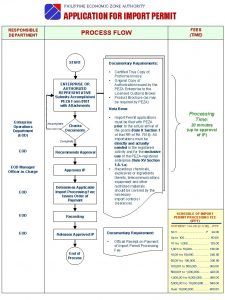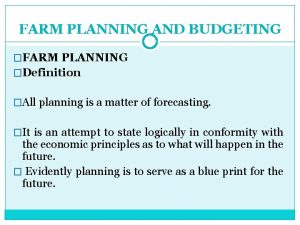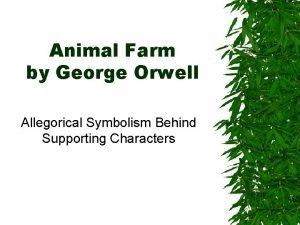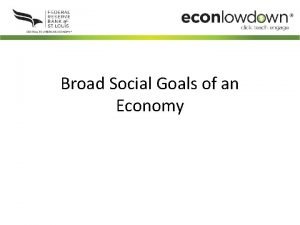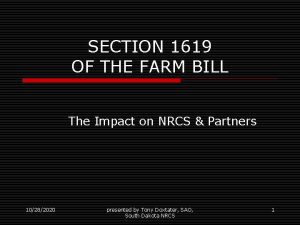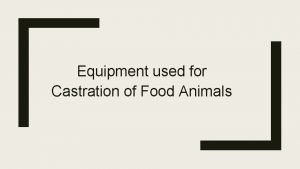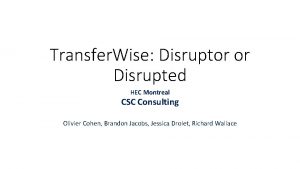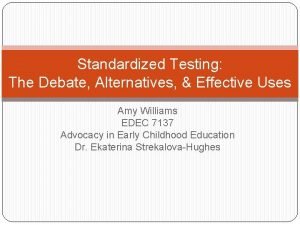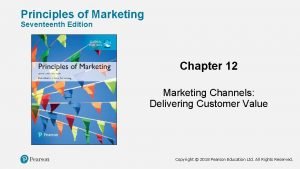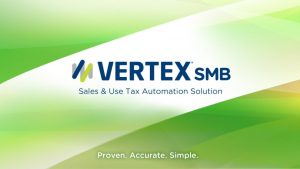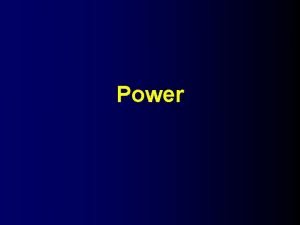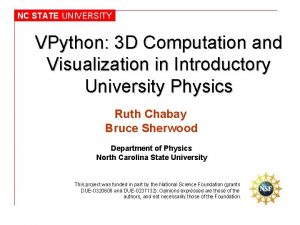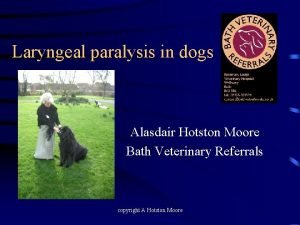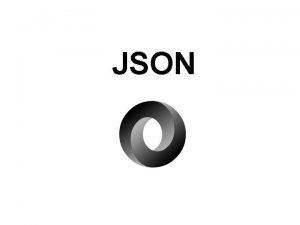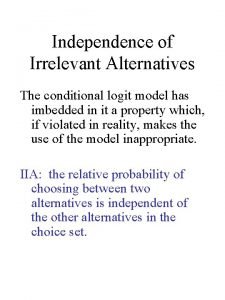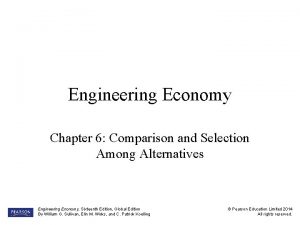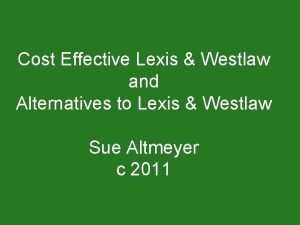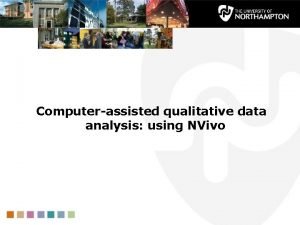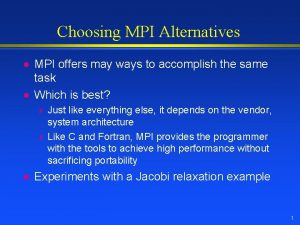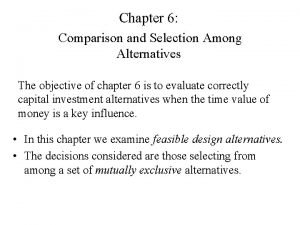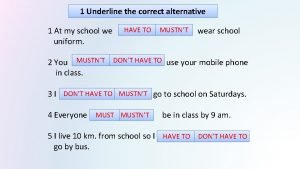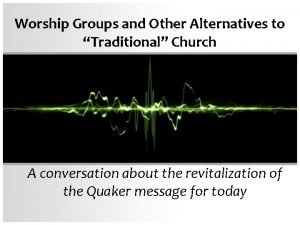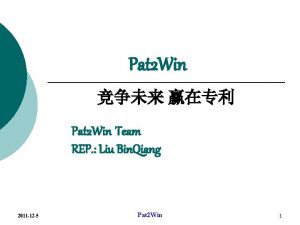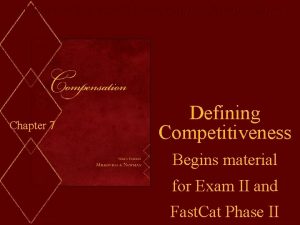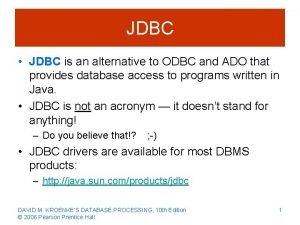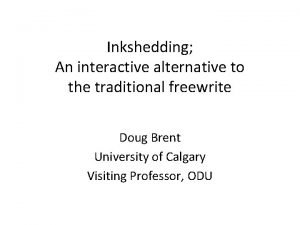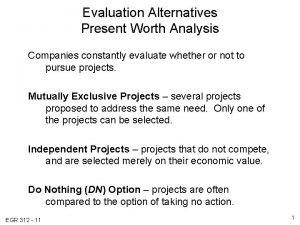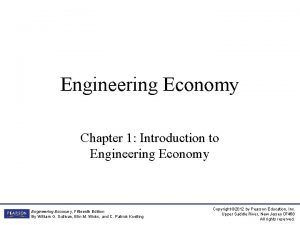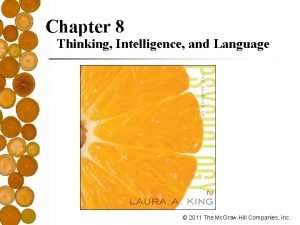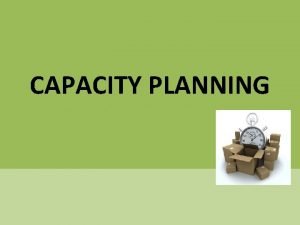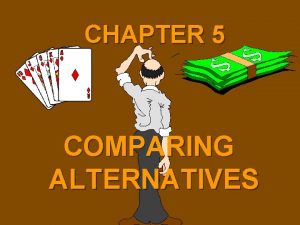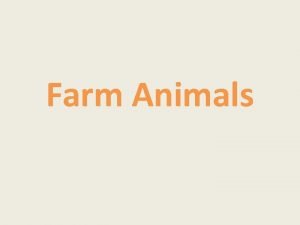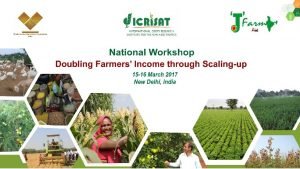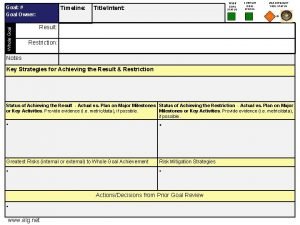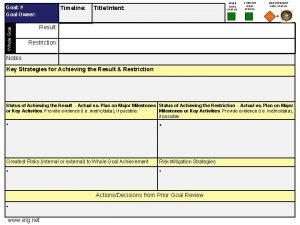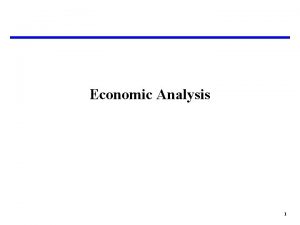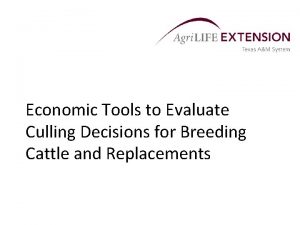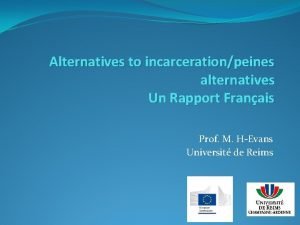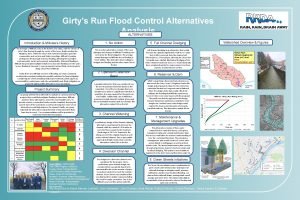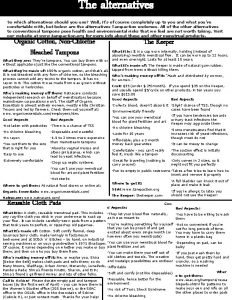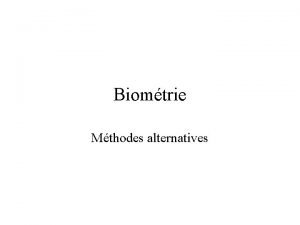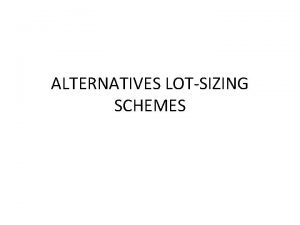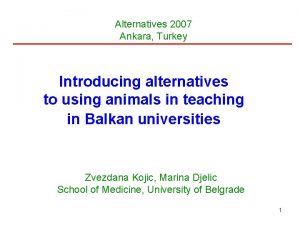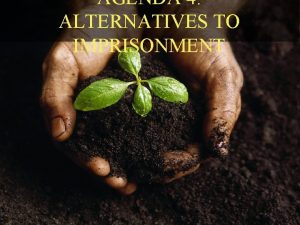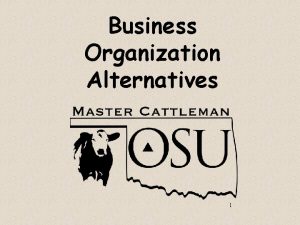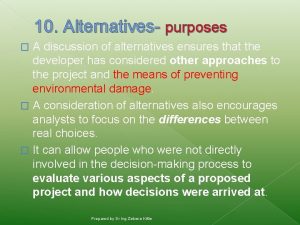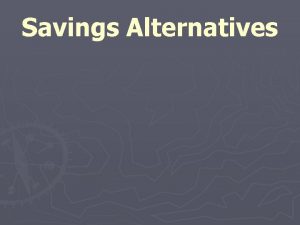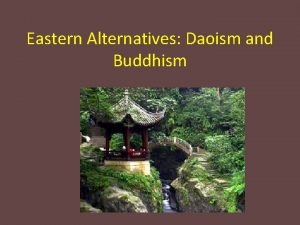Economic Tools to Evaluate Farm Alternatives The Goal




















































































- Slides: 84

Economic Tools to Evaluate Farm Alternatives

The Goal: An Economical Conservation Plan

Human Element in Natural Resources • • Soil Water Air Plant Animal Human Energy

Rubik’s Cube • Solving natural resource problems is much like solving a “Rubik’s Cube”…

Why Farm or Ranch? • Lifestyle • Income Business • Real Estate Market

Farming Philosophy

Scoping

SCHOOL The Planning Environment 4 H CLUB Stores The Social Environment FFA CLUB Money for Grandfather's Home Log Cabin Neighbors Seed Costs $ Church Markets Banker Taxes Hired Labor $ Pesticide Costs Equipment Landlord Farm Loan SPOUSE In-Laws Taxes The Business Environment Clubs (Homemakers Farm Bureau) Neighbors Fertilizer Costs Commodity Program Payments Kids Money for College $ Equipment Family Electric Power Money for Labor Line Retirement Animal Habitat Plant Death Conservation Management Recreation Loss Compliance Livestock Pasture management Water Seed Management Kids Costs Quality Nutrient The Resource Environment Management Soil Condition Fishing - Hunting Predator Management Soil Erosion Water Quantity

Soil Erosion Flooding Livestock Crop Yields Farm Income Wildlife Irrigation Air Quality Pests Cultural Resources Government Water Quality Fish Habitat Recreation Income SCOPING: Identify all problems & opportunities and focus on those to be considered in the planning process. Farm Income Water Quality Fish Habitat

Scoping • Identify significant issues to address • Provide a record of issues considered, but found not to be significant • Provide a record of NEPA compliance • Reduces the number of alternatives

Production Possibility Curve

Economic Effects • • Land Capital Labor Management Profitability Risk Social Well-Being What Changes?

Land Use - Is the present land use suitable for the proposed alternative? - Will land use change after practice installation? - How will a change affect the operation? - Will the action affect resources on which people depend for subsistence, employment or recreation? - Will land be taken in or out of production?

Capital • Does the Producer have the funds or ability to obtain the funds needed to implement the proposed alternative? - What are the impacts of the cost of the initial investment for this alternative? - What are the impacts of an additional annual cost for Operation and Maintenance (O&M)? • What possible impact does implementing this alternative have on the client’s future eligibility for farm programs?

Labor - The “Ability to Work” or Hire “Workers” - Measured in Units of Time (Hours, Years) - Includes the Landowner, Family, Hired Help or Other Trained Workers

Management Level - Does the client understand the inputs needed to manage the practice (s) and the client’s responsibility in obtaining these inputs? - Does the client understand their responsibility to maintain practice (s) as planned and implemented? - Is it necessary for the client to hire a technical consultant to operate and/or maintain the practice (s)? - Does the client have the knowledge to install and maintain the conservation plan?

Profitability - The Benefits and Costs of the Operation - Often Measured in Dollars - Profitable if Benefits Exceed Costs

Risk - Will the proposed alternative aid/risk client participation in USDA programs? How about regulatory action? - What are the possible impacts due to a change in yield? - Is there flexibility in modifying the conservation plan at a future date? - What issues are involved with the timing of installation and maintenance? - What are the cash flow requirements of this alternative? - What, if any, are the hazards involved? - Rather, will the conservation plan contribute to the minimization of cash flow disruptions or debt?

Social Well-Being - Represents the current social, cultural and economic situation of both the client and local community - A combination of the previous categories of Client and Community Well Being

Developing Alternatives

Cause and Effect Why? _____ Cause Why? __________ Resource Problem _______ So What? __________ So What? _____ Effect

Cause and Effect Most resource problems are caused by Humans Farm Labor Shortage Too busy managing cows, feeding/milking Don’t have time to redesign and move manure Easy access, no gates, always been there Dairy manure stack near the stream Nutrients & organics in surface water Algae Bloom in Lake Neighbors upset Less fish in lake, no swimming State Fish & Game stocked fish in lake Violate local water quality ordinance County fines/regulation, less tourist dollars Loss of income

Future With and Future Without

Planning Concepts “Historical” Condition Desired Future Condition The ecological, economic, or social condition one is attempting to achieve. “Health” Historical Condition with little or no influence by humans. Desired Future Condition Alternative 2 Benchmark Condition The present condition or situation that is used as a point of reference to measure change in resource conditions resulting from conservation treatment. Alternative 3 “Benchmark” Condition Future Without Alternative 1

Evaluating Multiple Alternatives Benchmark or present condition Desired Future Condition Alternative 3 Condition Alternative 2 Alternative 1 Future Without Alternative Time Future Without: Alternative – No Action, Projection of Benchmark Future With: Alternative 1 – Management/Vegetative Solution Alternative 2 – Structural Solution Alternative 3– Combination Structural/Vegetative

Conservation Effects for Decision Making

Conservation Effects for Decision Making Benchmark Condition Conservation Treatment (Present Condition) (Future Condition) Impacts (Things that Change) Decision Maker’s Values “T” Chart T

CONSERVATION TREATMENT EFFECTS INFORMATION NAME – LOCATION – DATE CONSERVATION MANAGEMENT UNIT CONSERVATION TREATMENT: “+” POSITIVE EFFECTS (Benefits) + + + RESOURCE PROBLEMS: “-” NEGATIVE EFFECTS (Costs) -

Benefit-Cost Analysis

Benefit-Cost Analysis 1. Estimate Costs 2. Estimate Benefits 3. Convert to “Like Terms” 4. Compare Costs and Benefits

Estimate Costs, Sprinkler System Additional Costs Reduced Revenue • Side Roll Sprinkler Equipment - $600/Acre • Lost Corners in Field. 10 Ton Hay/Acre 1. • Operation & Maintenance $100/Acre/Year

Estimate Benefits, Sprinkler System Reduced Costs Additional Revenue • Lower Labor Costs 3 Hours/Acre/Year • Alfalfa Hay Yield 2 Tons/Acre/Year • Financial Assistance $300/Acre, Cost-Share • Water Quantity 2 Ac. Ft/Acre/Year

Sprinkler System Costs Additional Costs Equipment, Layout - $600/Acre, 10 Years, 9% Operation & Maintenance - $93/Acre/Year $100/Acre/Year Reduced Revenue Lost Corners in Field -. 10 Ton/Acre, $70/Ton $7/Acre/Year Benefits Additional Revenue Alfalfa Hay Yield - 2 Ton/Acre, $70/Ton Water Quantity - 2 Ac. Ft/Acre/Year $200/Acre/Year $140/Acre/Year Reduced Costs Labor Costs - 3 Hours, $10/Hour Cost-Share Payment - $300, 10 Year, 9% $30/Acre/Year $47/Acre/Year Net Benefit: $17/Acre/Year $217/Acre/Year

Partial Budgeting

Partial Budgeting • Systematically displays the Benefits and Costs • Only “things that change” are considered • Simplifies data collection • Use a “T” chart to display the “effects”

“T” CHART • Level I Qualitative Statements • Level II Units of Measurements, Dollars • Level III Economic and Financial Analysis

“T” Chart Example Pasture Improvement Brush Control $50/Acre Reseed Pasture $65/Acre Discount Rate 7% Time Period 10 Years Weed Control $15/Acre/Year Forage Increase 3 AUMs/Acre/Year Forage Value $12/AUM Forage Quality Improvement Migratory Spring Goose Habitat/Grazing Reduced Erosion (2 Tons) Water Quality Improvement PROBLEMS Plant Productivity, Erosion, Profitability SOLUTION Pasture Seeding, Brush & Weed Control

Level I CONSERVATION TREATMENT EFFECTS INFORMATION NAME – H. Gordon, Rocking Raindrop LOCATION – Aloha, Oregon DATE – 7/12/2004 CONSERVATION MANAGEMENT UNIT – Pasture, Willamette Valley, Oregon CONSERVATION TREATMENT: Pasture Seeding, Brush & Weed Control “+” POSITIVE EFFECTS (Benefits) Forage Quality Improvement Reduced Erosion Water Quality Improvement Goose Habitat Improves Bird Watching RESOURCE PROBLEMS: Plant Productivity, Erosion, Profitability “-” NEGATIVE EFFECTS (Costs) Goose Habitat Increases Trespassing Brush Control Reseed Pasture Forage Increase Weed Control

Level II CONSERVATION TREATMENT EFFECTS INFORMATION NAME – H. Gordon, Rocking Raindrop LOCATION – Aloha, Oregon DATE – 7/12/2004 CONSERVATION MANAGEMENT UNIT – Pasture, Willamette Valley, Oregon CONSERVATION TREATMENT: Pasture Seeding, Brush & Weed Control “+” POSITIVE EFFECTS (Benefits) Forage Quality Improvement Reduced Erosion, 2 Tons/Acre Water Quality Improvement Goose Habitat Improves Bird Watching RESOURCE PROBLEMS: Plant Productivity, Erosion, Profitability “-” NEGATIVE EFFECTS (Costs) Goose Habitat Increases Trespassing Brush Control $50/Acre Reseed Pasture $65/Acre $115/Acre Forage Increase 3 AUMs Year Weed Control $15. 00/Acre/Year

Level III CONSERVATION TREATMENT EFFECTS INFORMATION NAME – H. Gordon, Rocking Raindrop LOCATION – Aloha, Oregon DATE – 7/12/2004 CONSERVATION MANAGEMENT UNIT – Pasture, Willamette Valley, Oregon CONSERVATION TREATMENT: Pasture Seeding, Brush & Weed Control “+” POSITIVE EFFECTS (Benefits) Forage Quality Improvement Reduced Erosion, 2 Tons/Acre Water Quality Improvement Goose Habitat Improves Bird Watching Forage Increase 3 AUMs Year X $12/AUM = $36/Ac/Year Total Benefits = $36/Ac/Year RESOURCE PROBLEMS: Plant Productivity, Erosion, Profitability “-” NEGATIVE EFFECTS (Costs) Goose Habitat Increases Trespassing Brush Control $50/Acre Reseed Pasture $65/Acre $115/Acre 7% Interest, 10 Years =. 142 X $115 = $16. 33 Annual Installation Cost = $16. 33/Acre/Year Weed Control $15. 00/Acre/Year Total Costs = $31. 33/Acre/Year

Marginality “The rate of change in one variable when a small change is made in another variable”

Economics of Pasture Fertilization Max Yield = 70 Lbs Fertilizer Max Profit = 50 Lbs Fertilizer

Economics of Pasture Fertilization

More Tomorrow?

Investment Analysis (Time Value of Money)

Time Value of Money Farmers and ranchers want to know: • • • Total installation cost Annual benefits The loan payments Years to “break-even” Change in yield Rate of return on investment • Etc…

Time Value of Money • “Value” depends on when you receive something • “A bird in the hand is worth two in the bush” • We prefer $100 today over $100 next year – Invest and receive “interest” – May not get $100 next year

Time Value of Money The same is true for natural resources We prefer 10 ducks today, rather than 10 next year: - We may not be around next year - Ducks may be gone because of drought, flood or someone else shot them - Ducks could reproduce and we would have more than 10 ducks next year

Time Value of Money • • • Time Period Discount Rate Present Value Future Value Payment (Years) ($) (%) ($)

Time Value of Money • Money has a time value attached to it • $1 today = $1 + interest tomorrow • Comparison of $ today vs. $ future • Useful to compare $ in different time periods • Use amortization and discounting

Present Value $ • One-time value • Today • Installation Cost Years Annuity • Average annual values • Annual costs • Annual benefits • O&M costs $ Years Future Value • One-time value • In the Future • Replacement cost $ Years

Amortization • The payment to pay off a loan • Spread the cost of an investment over it’s life • “Periodic” can be in years, quarters, months

Amortization Example No-Till Drill Time Period Discount Rate Present Value Payment 15 Years 8 Percent $20, 000 ?

AVERAGE ANNUAL COST TABLE PER $ OF INSTALLATION COST LIFE % INTEREST RATE YEARS 6 7 8 9 10 11 12 13 2 0. 545 0. 553 0. 561 0. 568 0. 576 0. 584 0. 592 0. 599 3 0. 374 0. 381 0. 388 0. 395 0. 402 0. 409 0. 416 0. 424 4 0. 289 0. 295 0. 302 0. 309 0. 315 0. 322 0. 329 0. 336 5 0. 237 0. 244 0. 250 0. 257 0. 264 0. 271 0. 277 0. 284 6 0. 203 0. 210 0. 216 0. 223 0. 230 0. 236 0. 243 0. 250 7 0. 179 0. 186 0. 192 0. 199 0. 205 0. 212 0. 219 0. 226 8 0. 161 0. 167 0. 174 0. 181 0. 187 0. 194 0. 201 0. 208 9 0. 147 0. 153 0. 160 0. 167 0. 174 0. 181 0. 188 0. 195 10 0. 136 0. 142 0. 149 0. 156 0. 163 0. 170 0. 177 0. 184 11 0. 127 0. 133 0. 140 0. 147 0. 154 0. 161 0. 168 0. 176 12 0. 119 0. 126 0. 133 0. 140 0. 147 0. 154 0. 161 0. 169 13 0. 120 0. 127 0. 134 0. 141 0. 148 0. 156 0. 163 14 0. 108 0. 114 0. 121 0. 128 0. 136 0. 143 0. 151 0. 159 15 0. 103 0. 110 0. 117 0. 124 0. 131 0. 139 0. 147 0. 155 16 0. 099 0. 106 0. 113 0. 120 0. 128 0. 136 0. 143 0. 151 17 0. 095 0. 102 0. 110 0. 117 0. 125 0. 132 0. 140 0. 149 18 0. 092 0. 099 0. 107 0. 114 0. 122 0. 130 0. 138 0. 146

Amortization Example No-Till Drill Time Period Discount Rate Present Value Payment Present X Value 15 Years 8 Percent $20, 000 $2, 340/Year (. 117 X $20, 000) Amortization = Payment Factor (i, Yrs. )

One-Time Cost and Annual Benefits How do you compare costs and benefits over different time periods? $5, 000 farm improvement creates $750/Year income benefit

Amortize the One-Time Cost $5, 000 One Time Cost = $648 Annual Cost (10 -Year, 5% Interest)

Compare Annual Benefits to Annual Costs The Annual Benefits are Greater than the Annual Costs $750 Benefit - $648 Cost = +$102/Year

Discounting Converts future values to a onetime present value Present value is the value today, here and now Net Present Value Analysis

Compared One Time Cost to One Time Benefit Discount $750 Annual Benefit to $5, 791 Present Value (10 -Year, 5% Interest) $5, 791 Benefit > $5, 000 Cost

Compare “One Time” and “Future One-Time” Costs to One Time Benefit Discount $2, 500 Cost to $1, 959 Present Value (5 -Year, 5% Interest) $5, 000 + $1, 959 = $6, 959

Benefit Cost Ratios Measures the benefit of some activity per dollar cost • • Identify benefits and costs Convert to like terms Divide the benefits by the costs If the B/C is greater than 1. 00, the project is economically worth doing

Benefit Cost Ratios For example: • The forage benefits are $13/Acre/Year • Spend $10/Acre/Year on a pasture improvement • The B/C ratio is $13 / $10 = 1. 3 What if the benefits are not in "dollar" units ? • Improvement costs $100/year • Receive 120 additional ducks/year • B/C ratio is 120 Ducks / $100 = 1. 20 ducks / $1

Cost Effectiveness

Cost Effectiveness “Least cost” installing 1, 000 feet of terrace? • Tillage equipment $3. 00/Foot • Dozer $2. 50/Foot • Road grader $2. 00/Foot The road grader is the most cost effective

Break Even Analysis

Break-Even Analysis • • • Solve for: “How much can I afford” “How long to get my money back” “Return on the investment” “What net gain to pay expenses”

Break-Even Example – Forage Value of Forage, Pasture Seeding Total Treatment Cost: Annual Treatment Cost: ($60/Ac, 20 Years, 8% Interest) $60. 00/Acre $6. 11/Ac/Yr Cost Divide by Forage Increase = Breakeven Value $6. 11 1. 00 AUM/Ac $6. 11. 75 AUM/Ac $8. 15 AUM/Ac $6. 11. 50 AUM/Ac $12. 20 AUM/Ac

Break-Even Example – Forage Cost Breakeven Cost to Improve Pasture Value Multiply Forage Increase = Breakeven Cost $12/AUM 1. 00 AUM/Ac $12. 00 /Ac $12/AUM. 75 AUM/Ac $9. 00 /Ac $12/AUM. 50 AUM/Ac $6. 00 /Ac

Financial Analysis versus Economic Analysis

Financial Analysis vs. Economic Analysis Economic analysis: • Is it Profitable? • Compare benefits & costs over the project's life Financial analysis: • Is it Affordable? • Compare benefits & costs over the loan period

Economic Analysis: PV $5, 000 = $648 Annual Cost (10 -Year, 5%) Financial Analysis: PV $5, 000 = $1, 155 Annual Cost (5 -Year, 5%)

Tax Considerations

Tax Considerations Do Not Give Tax Advice! Refer your client to a tax preparer or Internal Revenue Service (IRS)

Economic Data • Only use economic data that is useful to farmers or ranchers • It is more important to know “where” to get economic data, than to “have” economic data • Economic data is only good “today” Landowner Field Office Technical Guide Payment Schedules NRCS State Economist Crop/Livestock Budgets University/Extension Service Other Agencies, Conservation Partners, Etc

Class Exercise





The End

Class Exercise

Class Exercise: “T” Chart Wheat Residue Management Columbia Plateau, Oregon No-Till Drill/2, 000 Acres $15, 000 Discount Rate 7% Time Period 10 Years Increased Herbicide Use $25/Acre Crop Yield Increase Bushels/Acre 8 Crop Value $4/Bushel Crop Quality Improvement Pheasant/Quail Habitat Improvement Reduced Erosion (2 Tons) Water Quality Improvement

Class Exercise: “T” Chart CONSERVATION TREATMENT EFFECTS INFORMATION NAME – H. Gordon LOCATION – Aloha, Oregon SETTING – Wheat, Columbia Plateau, Oregon CONSERVATION TREATMENT: Residue Management, Direct Seeding POSITIVE EFFECTS (Benefits) Crop Yield Increase 8 Bushels/Year X $4/Bu = $32/Year Crop Quality Improvement Pheasant/Quail Habitat Improvement DATE – July 4, 2004 RESOURCE PROBLEMS: Productivity, Erosion, Water Quality NEGATIVE EFFECTS (Costs) No-Till Drill $15, 000/2, 000 Acres = $7. 50/Acre Annual Cost (7%, 10 Years) $7. 50 X. 142 = $1. 07/Acre/Year Increased Herbicide Cost = $25. 00/Acre/Year Reduced Erosion = 2 Tons Increased Risk of New System Water Quality Improvement Total Benefits = $32/Acre/Year Total Costs = $26. 07/Acre/Year
 Harmouns
Harmouns Peza process flow
Peza process flow Meaning of farm planning
Meaning of farm planning Pinchfield farm
Pinchfield farm Broad social goals definition
Broad social goals definition Economic growth vs economic development
Economic growth vs economic development Economic development vs economic growth
Economic development vs economic growth Economic systems lesson 2 our economic choices
Economic systems lesson 2 our economic choices Farm tools 1619
Farm tools 1619 Tools used in castration of farm animals
Tools used in castration of farm animals Cutting tools in sewing with pictures and meaning
Cutting tools in sewing with pictures and meaning Hát kết hợp bộ gõ cơ thể
Hát kết hợp bộ gõ cơ thể Frameset trong html5
Frameset trong html5 Bổ thể
Bổ thể Tỉ lệ cơ thể trẻ em
Tỉ lệ cơ thể trẻ em Gấu đi như thế nào
Gấu đi như thế nào Chụp phim tư thế worms-breton
Chụp phim tư thế worms-breton Chúa yêu trần thế
Chúa yêu trần thế Môn thể thao bắt đầu bằng từ chạy
Môn thể thao bắt đầu bằng từ chạy Thế nào là hệ số cao nhất
Thế nào là hệ số cao nhất Các châu lục và đại dương trên thế giới
Các châu lục và đại dương trên thế giới Cong thức tính động năng
Cong thức tính động năng Trời xanh đây là của chúng ta thể thơ
Trời xanh đây là của chúng ta thể thơ Cách giải mật thư tọa độ
Cách giải mật thư tọa độ Phép trừ bù
Phép trừ bù Phản ứng thế ankan
Phản ứng thế ankan Các châu lục và đại dương trên thế giới
Các châu lục và đại dương trên thế giới Thể thơ truyền thống
Thể thơ truyền thống Quá trình desamine hóa có thể tạo ra
Quá trình desamine hóa có thể tạo ra Một số thể thơ truyền thống
Một số thể thơ truyền thống Cái miệng nó xinh thế chỉ nói điều hay thôi
Cái miệng nó xinh thế chỉ nói điều hay thôi Vẽ hình chiếu vuông góc của vật thể sau
Vẽ hình chiếu vuông góc của vật thể sau Thế nào là sự mỏi cơ
Thế nào là sự mỏi cơ đặc điểm cơ thể của người tối cổ
đặc điểm cơ thể của người tối cổ Giọng cùng tên là
Giọng cùng tên là Vẽ hình chiếu đứng bằng cạnh của vật thể
Vẽ hình chiếu đứng bằng cạnh của vật thể Vẽ hình chiếu vuông góc của vật thể sau
Vẽ hình chiếu vuông góc của vật thể sau Thẻ vin
Thẻ vin đại từ thay thế
đại từ thay thế điện thế nghỉ
điện thế nghỉ Tư thế ngồi viết
Tư thế ngồi viết Diễn thế sinh thái là
Diễn thế sinh thái là Các loại đột biến cấu trúc nhiễm sắc thể
Các loại đột biến cấu trúc nhiễm sắc thể Bảng số nguyên tố
Bảng số nguyên tố Tư thế ngồi viết
Tư thế ngồi viết Lời thề hippocrates
Lời thề hippocrates Thiếu nhi thế giới liên hoan
Thiếu nhi thế giới liên hoan ưu thế lai là gì
ưu thế lai là gì Khi nào hổ con có thể sống độc lập
Khi nào hổ con có thể sống độc lập Khi nào hổ mẹ dạy hổ con săn mồi
Khi nào hổ mẹ dạy hổ con săn mồi Hệ hô hấp
Hệ hô hấp Từ ngữ thể hiện lòng nhân hậu
Từ ngữ thể hiện lòng nhân hậu Thế nào là mạng điện lắp đặt kiểu nổi
Thế nào là mạng điện lắp đặt kiểu nổi Create khoot
Create khoot In conclusion alternatives
In conclusion alternatives Non standard test
Non standard test Vertical marketing system
Vertical marketing system Vertex smb alternatives
Vertex smb alternatives In conclusion alternatives
In conclusion alternatives Ncsu webassign
Ncsu webassign Alternatives to surgery for laryngeal paralysis in dogs
Alternatives to surgery for laryngeal paralysis in dogs Json is a lightweight substitute for xml
Json is a lightweight substitute for xml Independence of irrelevant alternatives
Independence of irrelevant alternatives Global product planning strategic alternatives
Global product planning strategic alternatives Your local foundry is adding a new furnace
Your local foundry is adding a new furnace Desired service and adequate service
Desired service and adequate service Cch intelliconnect cost
Cch intelliconnect cost Alternatives to nvivo
Alternatives to nvivo Explore the alternatives in decision making
Explore the alternatives in decision making Mpi waitall
Mpi waitall Comparison and selection among alternatives
Comparison and selection among alternatives Global product planning strategic alternatives
Global product planning strategic alternatives Circle the correct alternatives we won't get
Circle the correct alternatives we won't get Alternatives to traditional church
Alternatives to traditional church Ap psych chapter 8
Ap psych chapter 8 Evaluating alternatives and making choices among them
Evaluating alternatives and making choices among them Winpat alternatives
Winpat alternatives External competitiveness in compensation
External competitiveness in compensation Jdbc alternative
Jdbc alternative Freewrite alternative
Freewrite alternative Mckinsey 9 box grid
Mckinsey 9 box grid Capitalized cost formula
Capitalized cost formula Engineering economy 15th edition
Engineering economy 15th edition Chapter 8 thinking language and intelligence
Chapter 8 thinking language and intelligence The art of capacity planning
The art of capacity planning

